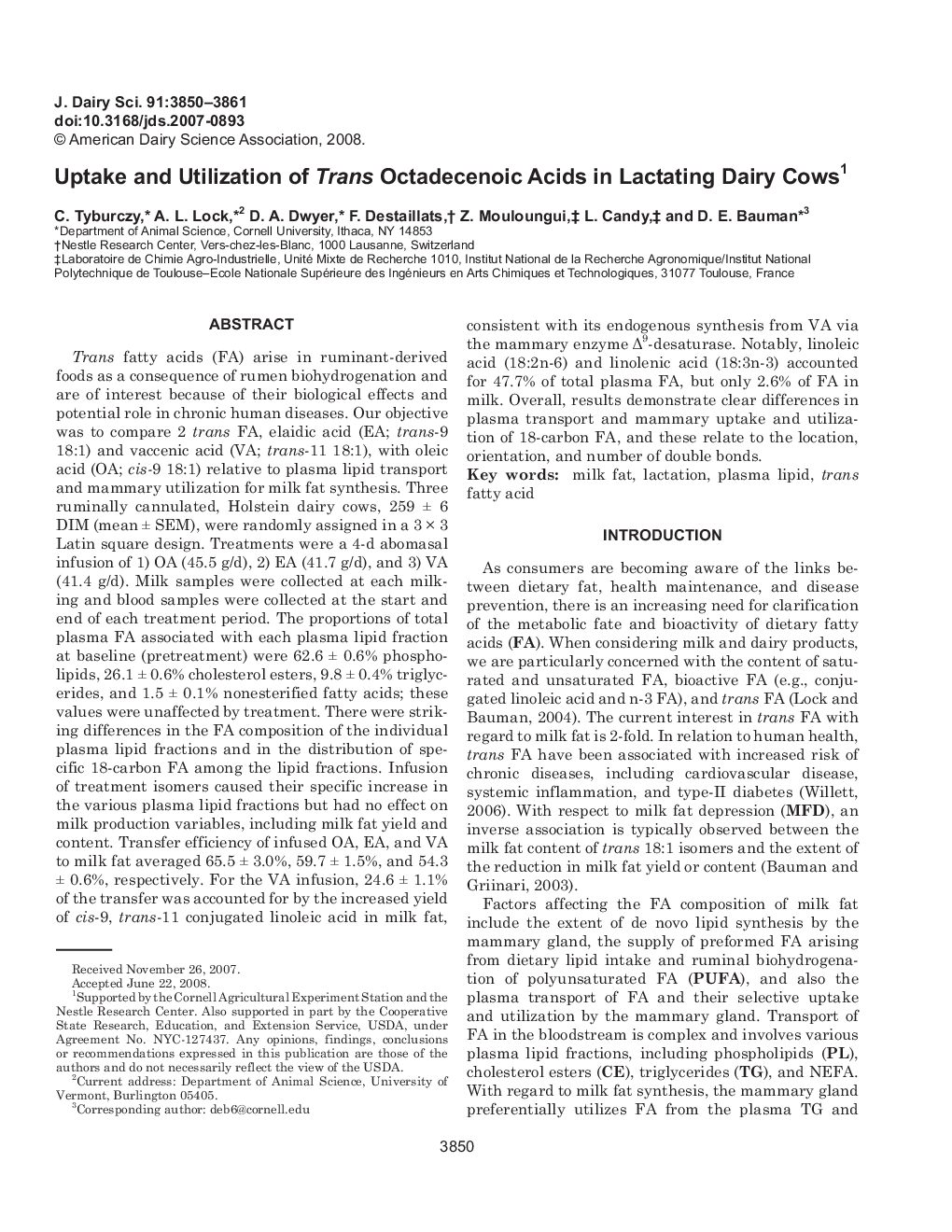| کد مقاله | کد نشریه | سال انتشار | مقاله انگلیسی | نسخه تمام متن |
|---|---|---|---|---|
| 2440232 | 1108114 | 2008 | 12 صفحه PDF | دانلود رایگان |

Trans fatty acids (FA) arise in ruminant-derived foods as a consequence of rumen biohydrogenation and are of interest because of their biological effects and potential role in chronic human diseases. Our objective was to compare 2 trans FA, elaidic acid (EA; trans-9 18:1) and vaccenic acid (VA; trans-11 18:1), with oleic acid (OA; cis-9 18:1) relative to plasma lipid transport and mammary utilization for milk fat synthesis. Three ruminally cannulated, Holstein dairy cows, 259 ± 6 DIM (mean ± SEM), were randomly assigned in a 3 × 3 Latin square design. Treatments were a 4-d abomasal infusion of 1) OA (45.5 g/d), 2) EA (41.7 g/d), and 3) VA (41.4 g/d). Milk samples were collected at each milking and blood samples were collected at the start and end of each treatment period. The proportions of total plasma FA associated with each plasma lipid fraction at baseline (pretreatment) were 62.6 ± 0.6% phospholipids, 26.1 ± 0.6% cholesterol esters, 9.8 ± 0.4% triglycerides, and 1.5 ± 0.1% nonesterified fatty acids; these values were unaffected by treatment. There were striking differences in the FA composition of the individual plasma lipid fractions and in the distribution of specific 18-carbon FA among the lipid fractions. Infusion of treatment isomers caused their specific increase in the various plasma lipid fractions but had no effect on milk production variables, including milk fat yield and content. Transfer efficiency of infused OA, EA, and VA to milk fat averaged 65.5 ± 3.0%, 59.7 ± 1.5%, and 54.3 ± 0.6%, respectively. For the VA infusion, 24.6 ± 1.1% of the transfer was accounted for by the increased yield of cis-9, trans-11 conjugated linoleic acid in milk fat, consistent with its endogenous synthesis from VA via the mammary enzyme Δ9-desaturase. Notably, linoleic acid (18:2n-6) and linolenic acid (18:3n-3) accounted for 47.7% of total plasma FA, but only 2.6% of FA in milk. Overall, results demonstrate clear differences in plasma transport and mammary uptake and utilization of 18-carbon FA, and these relate to the location, orientation, and number of double bonds.
Journal: Journal of Dairy Science - Volume 91, Issue 10, October 2008, Pages 3850–3861